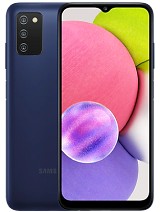Samsung Galaxy S9 Plus Low Light Camera Test at MWC 2018 By Engadget
We're here in Barcelona's, beautiful Gothic quarter on an unseasonable cold night, because Samsung just launched the galaxy s 9 and s 9, plus here in Barcelona's, MWC 2018, and what better way to test these new low-light features than to take it out on the town and take all the sites in we're going to dive deep into two new features for these darker situations. First, there is a dual aperture here: it jumps between a stop, 1.5 and 2.4. That 1.5 is wider than ever before in a smartphone, and it can let in so much more light and improve the clarity of your shots in darker conditions. The other is that the camera has dedicated memory built onto the sensor, so it can better and more quickly process, multi-frame, noise reduction. So let's go check it out. Samsung has more or less nailed as smartphone cameras, so it's no surprise really to see that the Galaxy S 9 plus generally takes photos with great colors and clarity.
Scenes that are largely shrouded in darkness appear well-lit to the point where they look even brighter than in real life, especially when shot in full, auto mode. So far, I've just done some testing around this water fountain here in the quarter and from what I can tell it's really working right, the F 1.5 kicks in on its own and auto mode. It makes the entire scene look really bright. However, if I want to capture some of that atmosphere of that being dark at night, I can go over to Pro Mode and choose the aperture myself, not zooming in on one of these pictures, I also saw that the statues face on the water fountain was super clear, regardless of whether was in the F 2.4 or F 1.5. The larger aperture tends to cause some blur more than at F 2.4, but both stills are not pretty crisp. One of the downsides are shooting at such a wide.
Aperture, though, is that dynamic range suffers. Parts of the scene that are bright will be blown out, such as the restaurant. In the background of this photo but see how we were able to recover some details in this other shot. Here's how we did that, while auto mode is nifty in a pinch and for people who don't want to bother with all the settings. Pro Mode is actually where the real power is that not only can you switch between different levels of ISO, you can also use a dual aperture whenever you decide the caveat here is that you can't switch in between 1.5 and to 4. It is a binary option if it's 2, 4 or 1.5, or nothing. If you have the time the patience or the skills to play around in promo.
Do yourself a favor and do it, because the pictures you get are generally more evenly exposed and have better dynamic range than in auto mode. One of the other low-light features here is multi frame: noise reduction, the s 9 + s, 9 + used 12 images per shot to smooth out noise and do so quickly. While we can't see this in action, the results are evident. There are fewer color specs in general, and outlines of objects are crisp which seems to indicate that the noise reduction is working. The dual pixel autofocus also appears to be effective.
Despite my hands shivering in the cold, there is little motion blur in the wide aperture shots. Those are differences that are hard to tell without further testing. What we can say now is that with the dual aperture feature and can really see the difference, all other things constant, the brightness of images shot at F, 2.4 and f 105 are noticeably brighter. Just look at these two pictures of our video producer. It's been really nice testing the camera out here in beautiful Gothic quarter, but really we use our cameras inside a lot too.
So, hey, let's check it out inside this bar. One of the concerns with shooting at wider apertures is that focus might be softer for subjects that aren't close to the camera, but from our testing so far. The difference in clarity really isn't that noticeable. If you look at this cocktail glass and appears almost as crisp in F 1.5 as it does an F — top another set of features on the camera that don't specifically have to do with low-light our dual capture and live focus thanks to the telephoto and wide angle lens pair on the s9 plus, you can snap two pictures at once. Why not close and one further out live focus, helps you get pictures with a nice blurred background, while retaining shallow focus.
Overall, the new low-light features seem effective, but the results ultimately aren't super impressive. The software still introduces artifacts that are noticeable when you zoom in, but for your Instagram and Facebook uploads they're, going to be perfectly adequate. The extra-large opening will come in handy, especially in really dark scenarios, so night owls may enjoy the better photo ops with his phone, so that was just a deeper look at the s9 pluses performance in low-light, specifically, there's. Obviously a lot more features that we should try in daylight umbrella and other sorts of conditions, so stay tuned for more of that to come. You.
Source : Engadget

























